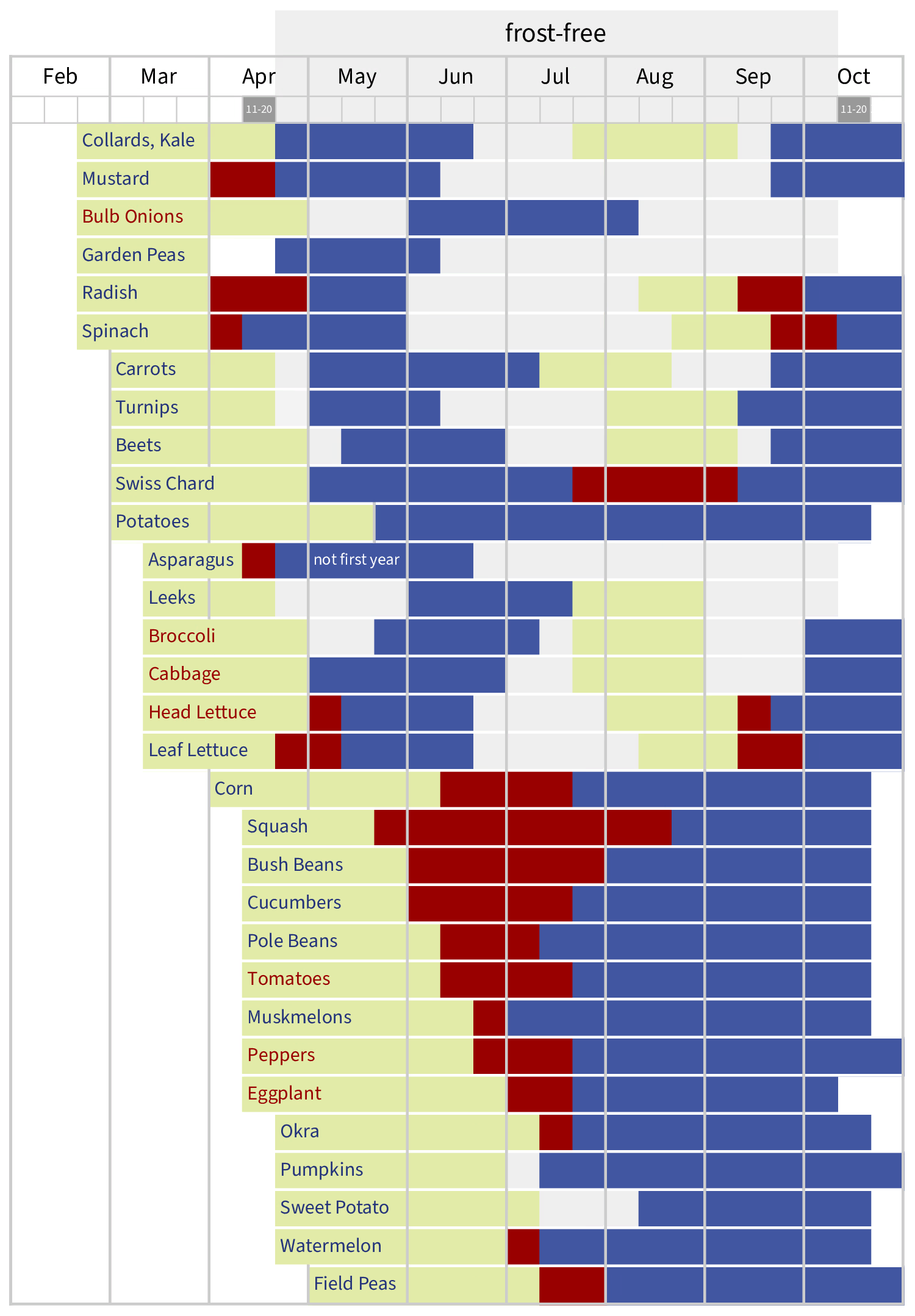2 minute read
Vegetables & Herbs
Vegetables
- Transplant brussel sprouts and collards in mid-July. Continue side-dressing.
- Supplement rainfall as needed to provide 1 inch of water weekly. The goal is to keep the top 6–8 inches of soil moist. Water early in the morning so that foliage dries. Wet foliage encourages disease.
- For most vegetables, harvest early in the morning when water content is highest to ensure the best flavor and texture. For peas and corn, harvest in the afternoon when sugar content is highest, especially if the weather is cool and sunny. See Harvest for details on specific vegetables.
- Monitor cucumbers for cucumber beetles, eggplants and tomatoes for flea beetles, and squashes for aphids and borers.
- Avoid blossom end rot by keeping soil consistently moist and not over-fertilizing.
Vegetable Calendar
The chart below uses 10-day intervals based on our Orange County frost dates. We use conservative frost date ranges of April 11–20 and October 11–20, meaning that there is only a ten percent chance of a later spring frost or earlier fall frost. Planting in the middle of a vegetable’s date range is the most reliable choice.
direct sow / transplant
harvest
plant & harvest
frost

Herbs
- Pinch back basil, catmint, and catnip to prevent flowering and keep them bushy, but allow some basil plants to bloom to attract bees. Sow a new crop each month to harvest leaves. When you need a few chives from the garden, cut generously to encourage new growth. Snip the extras into short segment, put them in a plastic container and store in the freezer.
- Basil downy mildew is here to stay. Leaves will look yellow and spores will be visible on the undersurface of the leaf. Flavored basils, such as lemon or cinnamon, are less susceptible, and there are now resistant varieties of traditional Italian sweet basil: four Rutgers varieties and Proven Winners ‘Amazel’. If you confirm infestation, you can report your findings to Cornell Universtiy.
Fruits
- Continue spraying tree fruits and bunch grapes with a fungicide.
- Prune out dieback on blueberries.
- Prune out the fruiting canes of raspberries and blackberries after the harvest is over. Cut canes at ground level.
- Harvest figs when they soften and turn downward. Prune out dead material and consider protecting trees next winter with 1–2 feet of loose mulch such as leaves or straw. Do not fertilize. In our area, fertilization makes figs more susceptible to cold damage.
